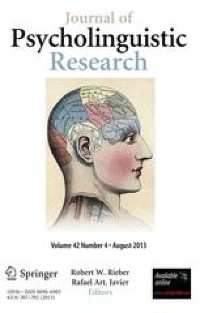Abstract
Narrativity has been proposed as an indicator of episodic memory strength when people discuss their past (Nelson and Horowitz in Discourse Processes 31:307–324, 2001. https://doi.org/10.1207/S15326950dp31-3_5). Referential Activity, the extent to which words convey a speaker's experience of being present in the event being described, has been independently hypothesized to indicate episodic memory strength (Maskit in J Psycholinguist Res, 2021. https://doi.org/10.1007/s10936-021-09761-8). These hypotheses are tested using a linguistic measure of narrativity and a computerized measure of referential activity to predict previous independent ratings of episodic memory strength that used the Levine et al. (Psychol Aging 17(4):677–689, 2002. https://doi.org/10.1037//0882-7974.17.4.677) measure of internal details in retold personal memories provided by Schacter (Addis et al. in Psychol Sci 19(1):33–41, 2008. https://doi.org/10.1111/j.1467-9280.2008.02043.x). Raters scored narrativity on four brief near and far past memories elicited from 32 subjects, using Nelson's narrative temporal sequence method based on Labov's (J Narrat Life Hist 7(1–4):395–415, 1997. https://doi.org/10.1075/jnlh.7.49som) analysis of spoken narratives of personal experience; computerized weighted scores of referential activity (WRAD) were obtained on these same 128 memories. Data analysis showed that narrative temporal sequences predict internal details and WRAD predict internal details. Adding WRAD to narrative temporal sequences improved the prediction of internal details.



Δεν υπάρχουν σχόλια:
Δημοσίευση σχολίου